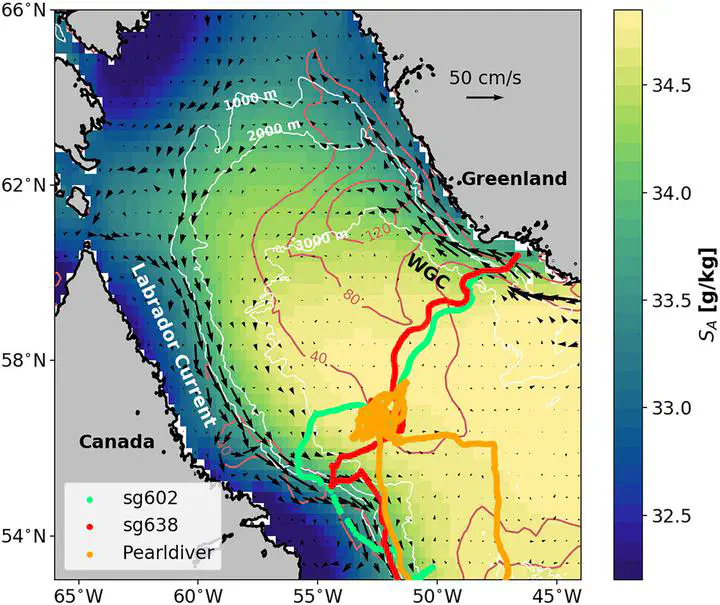Cessation of Labrador Sea Convection Triggered by Distinct Fresh and Warm (Sub)Mesoscale Flows

Abstract
By ventilating the deep ocean, deep convection in the Labrador Sea plays a crucial role in the climate system. Unfortunately, the mechanisms leading to the cessation of convection and, hence, the mechanisms by which a changing climate might affect deep convection remain unclear. In winter 2020, three autonomous underwater gliders sampled the convective region and both its spatial and temporal boundaries. Both boundaries are characterized by higher subdaily mixed layer depth variability sampled by the gliders than the convective region. At the convection boundaries, buoyant intrusions—including eddies and filaments—instead of atmospheric warming primarily trigger restratification by bringing buoyancy with a comparable contribution from either fresh or warm intrusions. At the edges of these intrusions, submesoscale instabilities, such as symmetric instabilities and mixed layer baroclinic instabilities, seem to contribute to the decay of the intrusions. In winter, enhanced lateral buoyancy gradients are correlated with strong destabilizing surface heat fluxes and alongfront winds. Consequently, winter atmospheric conditions and buoyant intrusions participate in halting convection by triggering restratification while surface fluxes are still destratifying. This study reveals freshwater anomalies in a narrow area offshore of the Labrador Current and near the convective region; this area has received less attention than the more eddy-rich West Greenland Current, but is a potential source of freshwater in closer proximity to the region of deep convection. Freshwater fluxes from the Arctic and Greenland are expected to increase under a changing climate, and our findings suggest that they may play an active role in the restratification of deep convection.